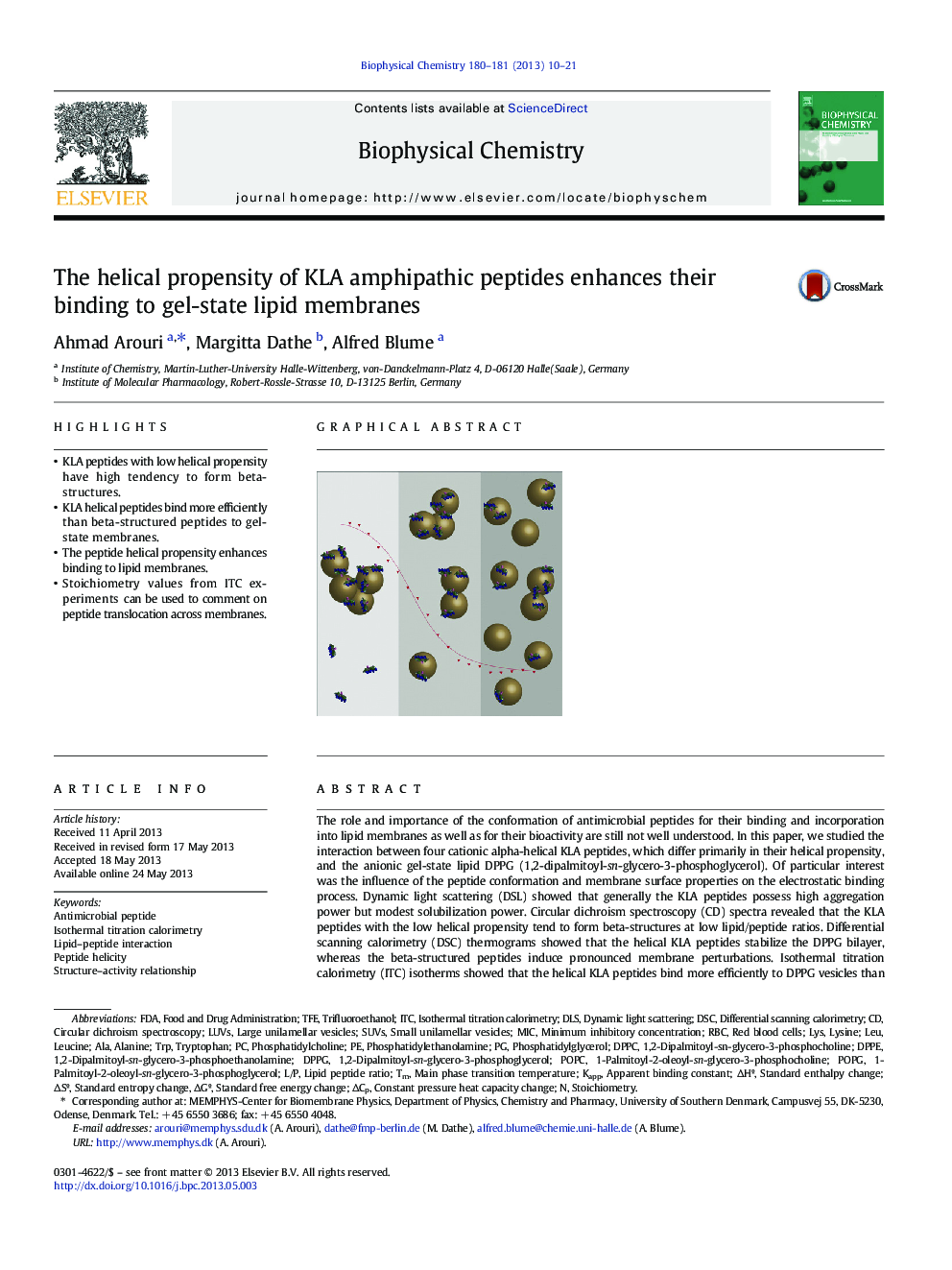| کد مقاله | کد نشریه | سال انتشار | مقاله انگلیسی | نسخه تمام متن |
|---|---|---|---|---|
| 5371082 | 1503933 | 2013 | 12 صفحه PDF | دانلود رایگان |

- KLA peptides with low helical propensity have high tendency to form beta-structures.
- KLA helical peptides bind more efficiently than beta-structured peptides to gel-state membranes.
- The peptide helical propensity enhances binding to lipid membranes.
- Stoichiometry values from ITC experiments can be used to comment on peptide translocation across membranes.
The role and importance of the conformation of antimicrobial peptides for their binding and incorporation into lipid membranes as well as for their bioactivity are still not well understood. In this paper, we studied the interaction between four cationic alpha-helical KLA peptides, which differ primarily in their helical propensity, and the anionic gel-state lipid DPPG (1,2-dipalmitoyl-sn-glycero-3-phosphoglycerol). Of particular interest was the influence of the peptide conformation and membrane surface properties on the electrostatic binding process. Dynamic light scattering (DSL) showed that generally the KLA peptides possess high aggregation power but modest solubilization power. Circular dichroism spectroscopy (CD) spectra revealed that the KLA peptides with the low helical propensity tend to form beta-structures at low lipid/peptide ratios. Differential scanning calorimetry (DSC) thermograms showed that the helical KLA peptides stabilize the DPPG bilayer, whereas the beta-structured peptides induce pronounced membrane perturbations. Isothermal titration calorimetry (ITC) isotherms showed that the helical KLA peptides bind more efficiently to DPPG vesicles than the beta-structured KLA peptides, and that the binding affinity of the peptides is proportional to the peptide helical propensity and membrane negative surface charge. The stoichiometry values (N) deduced from the ITC isotherms suggest that the helical KLA peptides have a higher capacity to translocate the DPPG lipid bilayer. The new data presented in this study demonstrate the flexibility of KLA peptides in adopting various conformations in response to the surrounding and also how the peptide structuring controls the mode of peptide-membrane interaction.
Journal: Biophysical Chemistry - Volumes 180â181, OctoberâNovember 2013, Pages 10-21